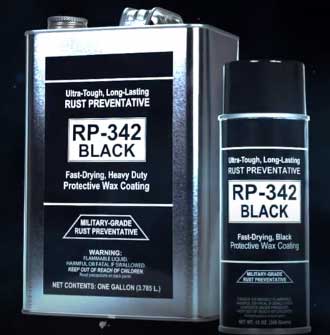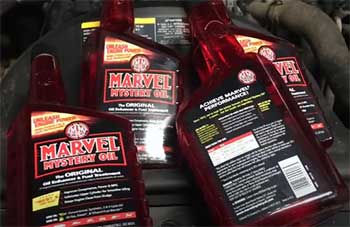Metals have a bad habit of mixing with the wrong crowd. Yes, we’re talking about oxygen, hydrogen, dirt, bacteria, or whatever elements that can cause metals to weaken and degrade over time.
Fortunately, our invention of rust and corrosion inhibitors has led to the longevity of metals. Today, we are going to assess two such widely used inhibitors: Cosmoline and Woolwax.
A Quick Comparison Table
| Properties | Cosmoline | Woolwax |
| Composition | Petroleum-based | Lanolin-based |
| Application | Applied as a thicker coating | Applied as a relatively thinner coating |
| Use Cases | Firearms, automotive parts, heavy machinery | Primarily automotive parts |
| Complications | Difficult to apply and remove | Relatively easier to apply and remove |
| Odor | Petroleum-like | Almost no odor |
| Environmental Impacts | Toxic and harmful if disposed of incorrectly | Non-toxic and safe |
In-depth Comparison of Cosmoline And Woolwax
Our comparison table only includes the properties that can affect the performance of Cosmoline and Woolwax. You must weigh each of these properties to correctly evaluate them and decide which inhibitor best suits your needs.
Now, let’s dive in and go over each of their properties in detail!
- Composition

Cosmoline is a generic term for a group of products commonly used to protect metal surfaces against rust and other forms of corrosion.
Generally, it is made from petroleum, waxes, and corrosion inhibitors, such as zinc or calcium compounds.
Depending on its product variations, it might contain other additives to enhance its adhesion, lubrication, or water resistance properties.
On the other hand, Woolwax, a viscous substance, is primarily made from lanolin, a wax-like material obtained from sheep’s wool.
It is produced by combining lanolin, oils, and other additives.
- Application
Cosmoline is usually applied in a thicker coating that provides heavy-duty protection against rust and corrosion. Its thicker and stickier consistency maintains its durability, even in harsh conditions.
Woolwax, on the contrary, provides a relatively thinner coating intended to slip into tight spaces and allow easier application.
Although it can provide lasting protection, it is not typically used for protecting metal objects during long-term storage.
- Use Cases
Although Cosmoline and Woolwax have a wide range of applications, they are mostly used in specific situations. Cosmoline is commonly used for protecting firearms, machinery, tools, and vehicles from rust and corrosion.
Cosmoline has more industrial and military applications due to its thicker, more durable protective coating. It is particularly applied for long-term storage while also being a popular choice for undercoating vehicles.
Woolwax is more popular for automotive undercarriages, frames, and other metal surfaces.
It’s thick coating strongly adheres to the undercarriage of vehicles and prevents salt, water, and other environmental factors from causing rust and corrosion.
- Complications

Cosmoline is typically thicker and has a greasy texture which can create complications during its application and removal.
Especially, the removal process can cause damage to the underlying surface if not handled properly.
Furthermore, it can leave behind a sticky remnant and draw in dirt and dust.
Compared to Cosmoline, Woolwax is more flexible and easier to apply.
Its thinner consistency allows for a more even coating which is suitable for undercoating vehicles.
Although it is generally a safe and non-toxic product, lanolin, a key ingredient in Woolwax, can cause allergic reactions in some users.
- Odor
Usually, Cosmoline has a petroleum smell that can be quite unpleasant and potentially harmful if not handled in a well-ventilated area.
However, some people may find it tolerable.
In contrast, Woolwax has a mild lanolin-like odor, often compared to the smell of lotion since lanolin is a common ingredient.
Generally, its smell is not unpleasant, and some people may even find it pleasant or neutral.
- Environmental Impacts
Both Cosmoline and Woolwax can have significant environmental impacts depending on how they are disposed of.
As a petroleum-based product, Cosmoline has a greater potential to harm the environment by releasing harmful chemicals. Furthermore, its non-biodegradable nature can damage soil and water sources.
On the other hand, Woolwax is a non-toxic, biodegradable, and environmentally friendly product derived from natural sources.
However, it can still harm the environment if disposed of incorrectly, particularly aquatic life in water sources.
Which One You Should Choose?
Both Cosmoline and Woolwax can be ideal choices for protection against rust and corrosion depending on user preferences, specific circumstances, and applications.
Cosmoline is known for its ability to withstand extreme environmental conditions and harsh elements, often faced in the military, aerospace, and automotive industries.
It also can support the long-term storage of firearms, machinery, and other equipment.
Cosmoline is also a popular choice for undercoating vehicles, but it can be quite messy and difficult to clean.
Additionally, its potential negative impact on the environment may be a factor to consider when deciding whether to use it or not.

Many people prefer Woolwax for its versatility and eco-friendliness.
It boasts a wide variety of applications, including automobiles, boats, trailers, and other equipment.
Its primary use is to protect the undercarriage of vehicles against moisture, salt, and other chemical agents, particularly in harsh winters.
If you are caught in the middle of deciding between Cosmoline and Woolwax, pay attention to these few words.
If your primary concern is long-term storage or protection of heavy-duty equipment, go with Cosmoline.
On the other hand, if you are looking for everyday maintenance and preservation of automobiles or other metal parts, Woolwax may be the answer.
Also Read: Pros And Cons of NH Oil Undercoating.
Frequently Asked Questions (FAQ)
Usually, Cosmoline undercoating should last for several years if maintained properly with care. In some cases, it held up for a decade or more.
Thanks to its thickness, Woolwax is unlikely to be washed off and can remain effective even in wet conditions. However, repeated exposure to water or other solvents may eventually cause it to wear off.
It depends on personal preferences and environmental conditions. Fluid film provides better coverage, but lasts about three years, and has an oily odor. Consider these factors when choosing between Fluid film and Woolwax.
Cosmoline does have the potential to cause rubber to swell and damage it over time. Some seemingly minor damages to critical rubber components of machinery or vehicles might prove fatal in a flash.
Conclusion
While both Cosmoline and Woolwax are very effective at guarding metal objects against rust and corrosion, the choice of which to use lies on your specific needs and circumstances.
The above guideline on Cosmoline and Woolwax should help you understand their essential aspects of them and make an informed decision.

